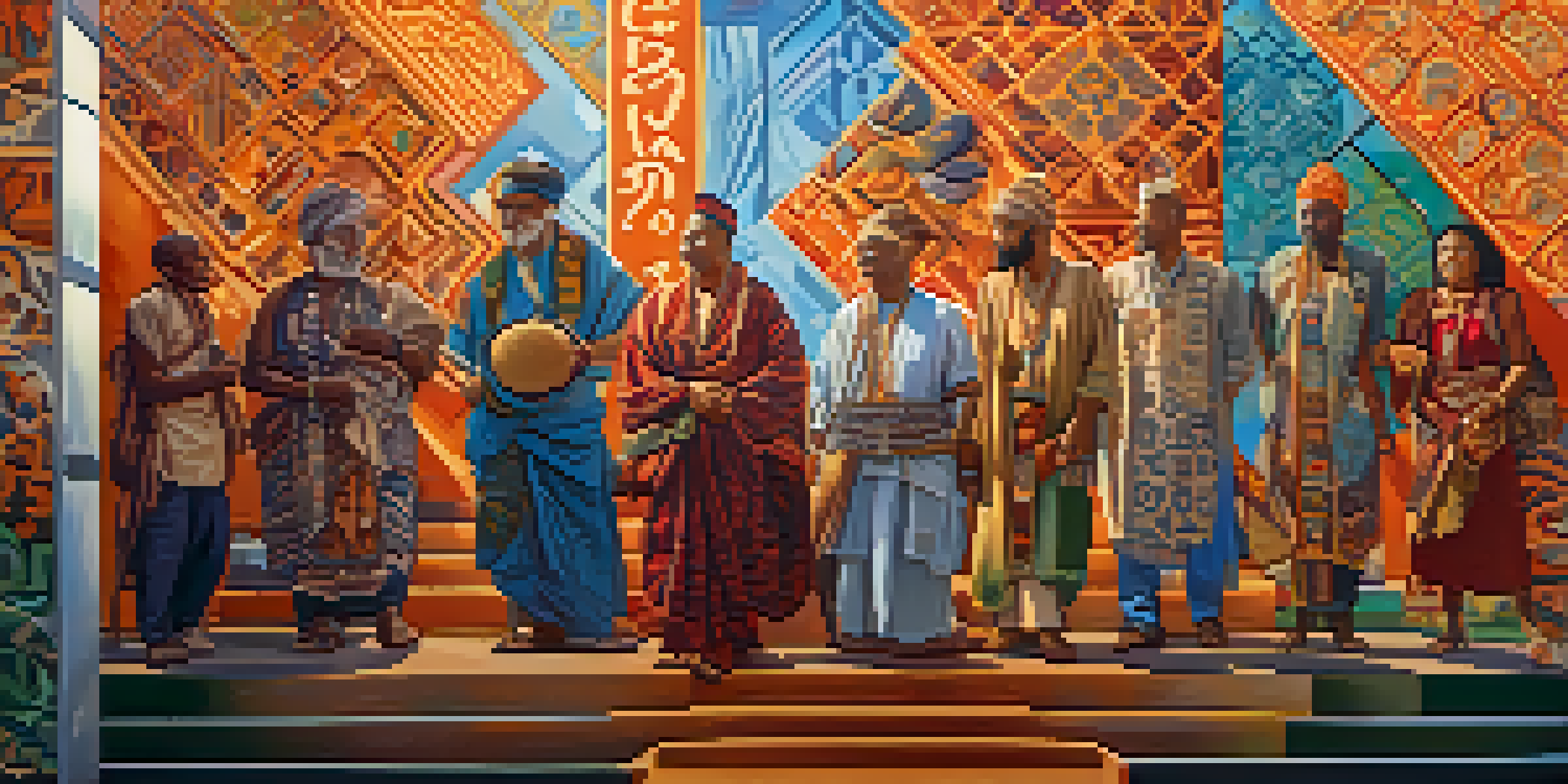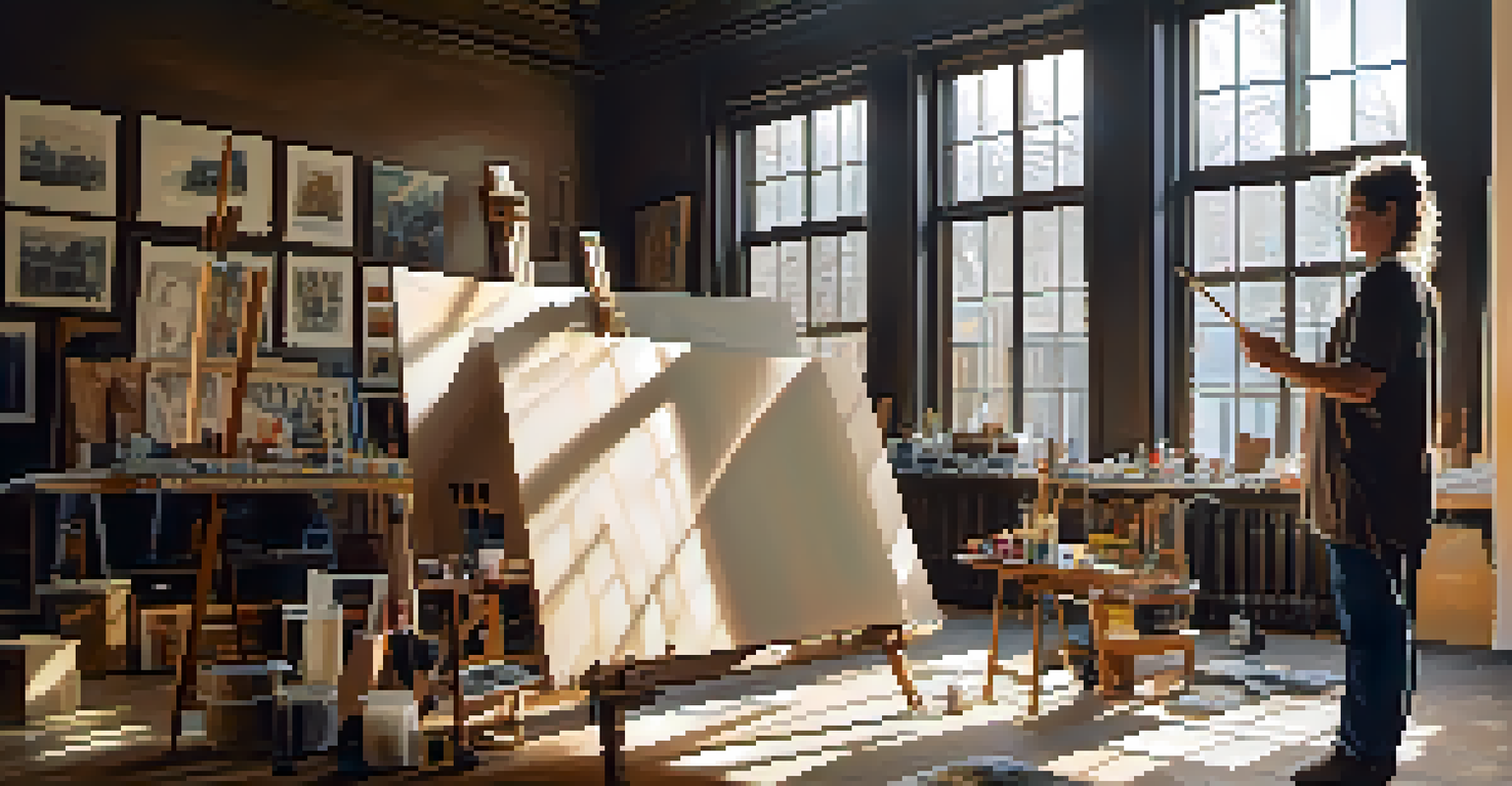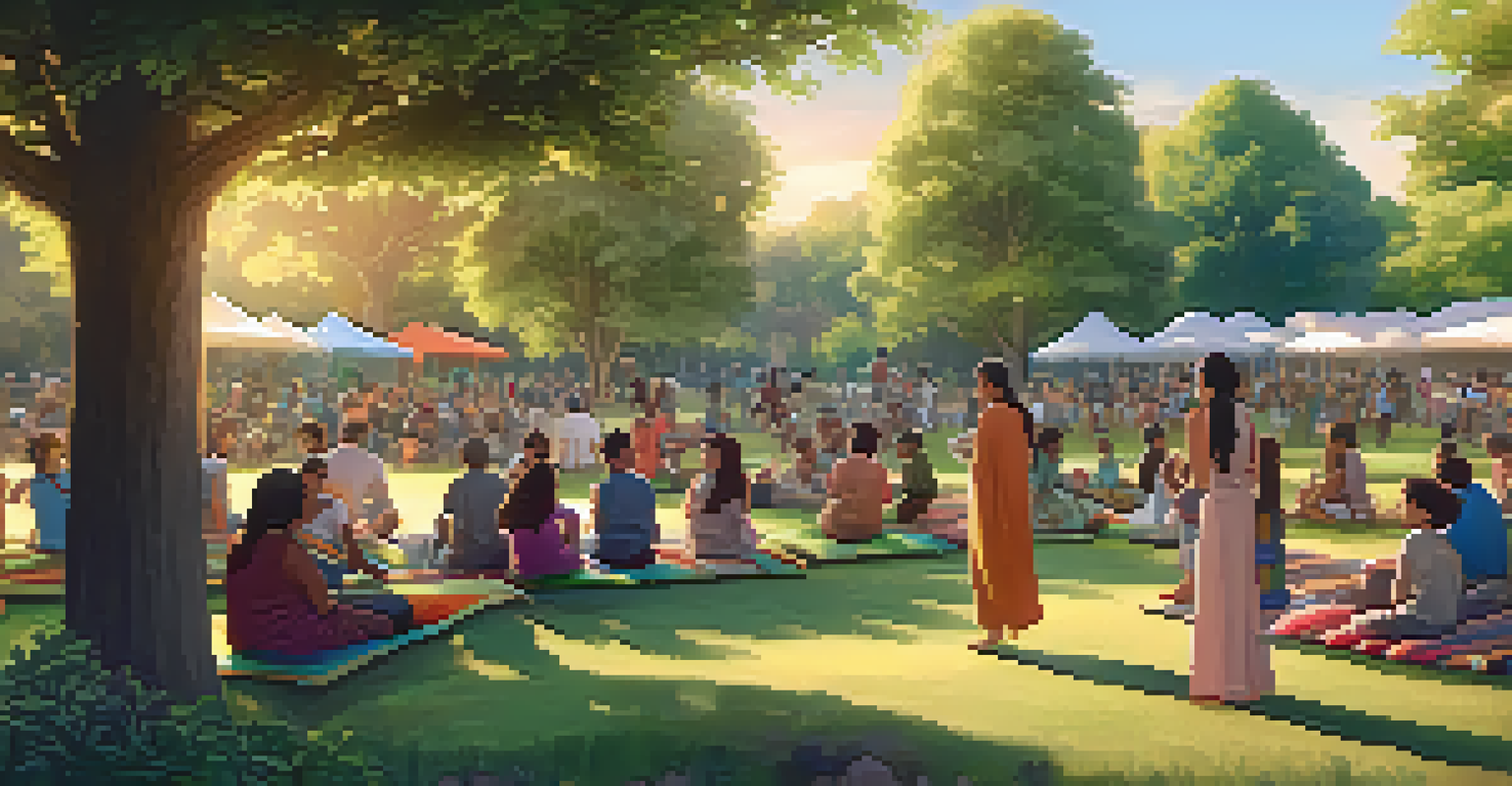The Role of Art in Shaping Cultural Narratives of Humanity

Art as a Mirror of Society's Values and Beliefs
Art has long served as a reflection of the values and beliefs held by a society. Whether through painting, music, or literature, artists convey the ethos of their time, helping us understand collective human experiences. For instance, the works of artists like Picasso during the Spanish Civil War reveal the tumult and chaos of their era, giving voice to societal struggles.
Art enables us to find ourselves and lose ourselves at the same time.
This mirroring effect allows us to grasp the complexities of different cultures and historical moments. Through art, we can see how societies have evolved, what they prioritized, and how they dealt with challenges. It's akin to looking into a vast, intricate mirror that reflects not just faces, but the very essence of humanity's journey.
Moreover, art can challenge prevailing norms and provoke thought, leading to societal change. By highlighting injustices or raising awareness, artists can inspire movements that reshape cultural narratives, reminding us that art is not just passive observation but an active component of social discourse.
Storytelling: Art's Role in Communicating Heritage
Storytelling is a powerful tool inherent in art, allowing cultures to pass down their histories and traditions. From ancient cave paintings to modern films, narratives are woven into the fabric of artistic expression, preserving the essence of a people’s identity. For example, indigenous art often incorporates folklore and ancestral stories that educate and connect generations.

This storytelling aspect serves not only to inform but also to unite communities. When a culture shares its stories through art, it fosters a sense of belonging and continuity, bridging the past with the present. Think of it as a thread that weaves together the rich tapestry of human experience across time and space.
Art Reflects Society's Values
Art serves as a mirror, reflecting the values, beliefs, and struggles of a society throughout history.
Additionally, art can also challenge the dominant narratives that often overshadow marginalized voices. By amplifying these stories through various art forms, we gain a more nuanced understanding of the human experience, highlighting the diversity that exists within cultural narratives.
The Emotional Connection: Art and Human Experience
Art has an unparalleled ability to evoke emotions and connect people on a deeper level. When we view a powerful painting or listen to a moving piece of music, we often find ourselves resonating with the emotions conveyed, regardless of our backgrounds. This emotional connection offers a shared experience that transcends language and cultural barriers.
Every artist dips his brush in his own soul, and paints his own nature into his pictures.
For instance, consider how a beautifully composed symphony can stir feelings of joy or sadness in listeners from different walks of life. This universality of emotion in art underscores its role in shaping cultural narratives by fostering empathy and understanding. It's as if art serves as a bridge, linking us through shared feelings and experiences.
Moreover, these emotional ties can inspire action and change, prompting individuals to reflect on their own lives and the world around them. Art encourages us to engage with our emotions and, in doing so, challenges us to consider our roles within our cultural narratives.
Art as a Catalyst for Social Change
Throughout history, art has played a crucial role in advocating for social change. Artists often use their platforms to address pressing issues, sparking conversations that can lead to transformative action. Think of the iconic protest songs of the 1960s or powerful visual art movements that challenged systemic inequalities.
These artistic expressions create awareness and can mobilize communities, driving them toward collective action. When art speaks out against injustice, it not only informs but also inspires individuals to join the cause. It’s like a rallying cry, galvanizing people around shared values and aspirations.
Storytelling Preserves Heritage
Through storytelling in various art forms, cultures pass down their histories and foster a sense of community.
Furthermore, art can envision a better future, helping to reshape cultural narratives in progressive ways. By envisioning alternative realities through creative work, artists encourage society to consider new possibilities and reimagine what is achievable, making art a vital tool in shaping humanity's trajectory.
The Intersection of Art and Technology in Cultural Narratives
In today's digital age, the intersection of art and technology has opened new avenues for storytelling and cultural expression. Social media platforms, virtual reality, and digital art have transformed how we engage with art and culture, allowing for a more interactive experience. This evolution has also democratized art, enabling diverse voices to share their narratives more broadly.
For example, viral art movements on social media can quickly mobilize support for various causes, demonstrating the power of technology in amplifying cultural narratives. Artists can now reach global audiences, fostering connections that were once limited by geography. It's as if technology has become a canvas, expanding the possibilities for artistic expression.
However, this shift also raises questions about authenticity and representation in art. As we navigate this new landscape, it’s crucial to consider how technology shapes our understanding of culture and the narratives we choose to elevate. The dialogue between art and technology continues to evolve, influencing how we perceive and participate in cultural narratives.
Art and Identity: Shaping Personal and Collective Narratives
Art serves as a powerful means of expressing identity, whether personal or collective. Through creative endeavors, individuals articulate their unique experiences and perspectives, shaping their identities. This process of expression can be incredibly liberating, allowing artists to explore and redefine who they are within the broader cultural narrative.
On a collective level, art functions as a unifying force for communities, reflecting shared experiences and heritage. Cultural festivals, traditional crafts, and community murals all contribute to a sense of belonging, reinforcing collective identities. It's like a patchwork quilt, where each piece represents a different story yet contributes to a cohesive whole.
Art Drives Social Change
Artists use their platforms to advocate for social change, inspiring collective action and challenging societal norms.
Additionally, as societies evolve, so too do the narratives surrounding identity. New art forms and movements often emerge in response to changing cultural landscapes, reflecting the dynamic nature of identity. This adaptability of art ensures that it remains relevant, continually shaping and reshaping the narratives that define us.
The Future of Art in Cultural Storytelling
As we look to the future, the role of art in shaping cultural narratives remains more vital than ever. With rapid globalization and technological advancements, artists are uniquely positioned to address the complexities of modern life. They can challenge outdated narratives and envision more inclusive stories that resonate with diverse audiences.
Moreover, the rise of collaborative art practices encourages collective storytelling, where communities come together to share their narratives. This trend not only enriches the cultural landscape but also empowers individuals to take an active role in shaping their narratives. It's like a chorus, where every voice contributes to a larger, harmonious story.

In essence, the future of art lies in its ability to adapt and evolve, reflecting the fluid nature of culture itself. By embracing innovation and inclusivity, art will continue to be a powerful force in shaping humanity's cultural narratives, ensuring that our stories are told and heard for generations to come.